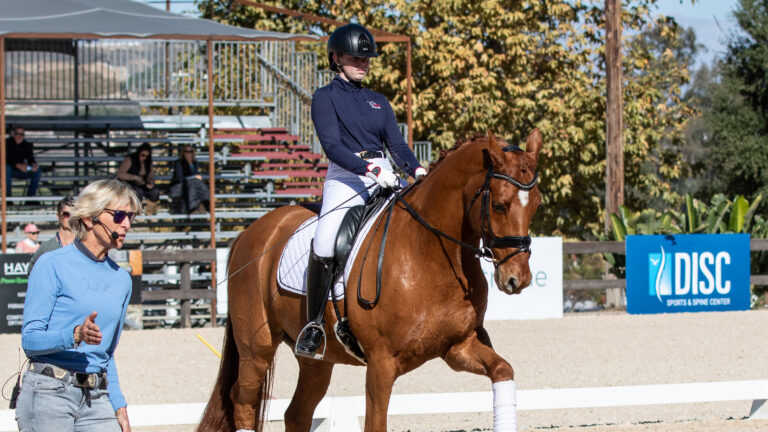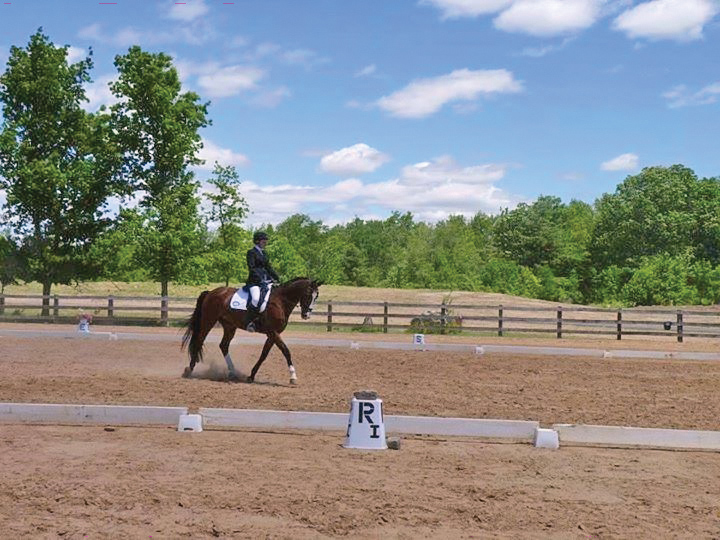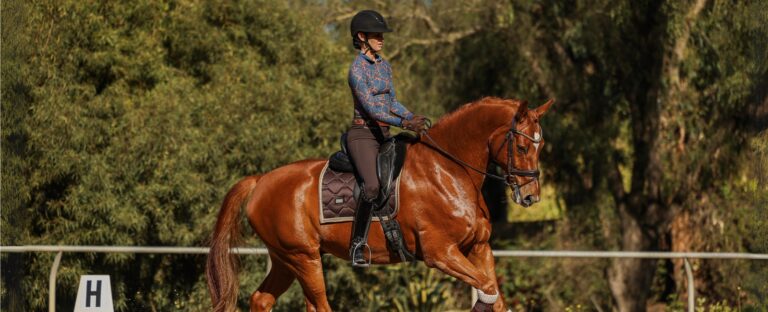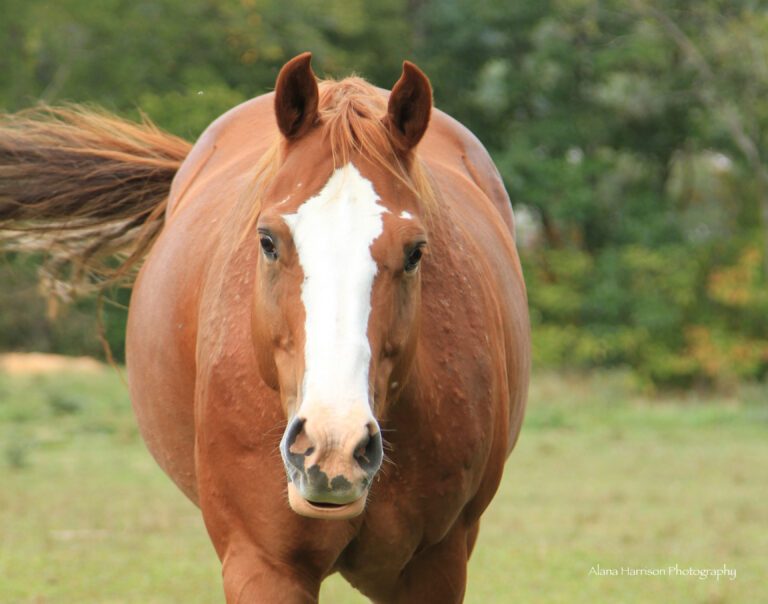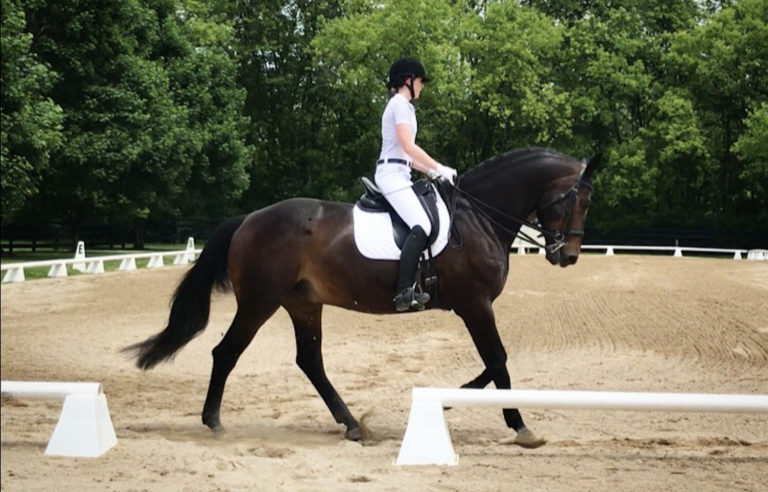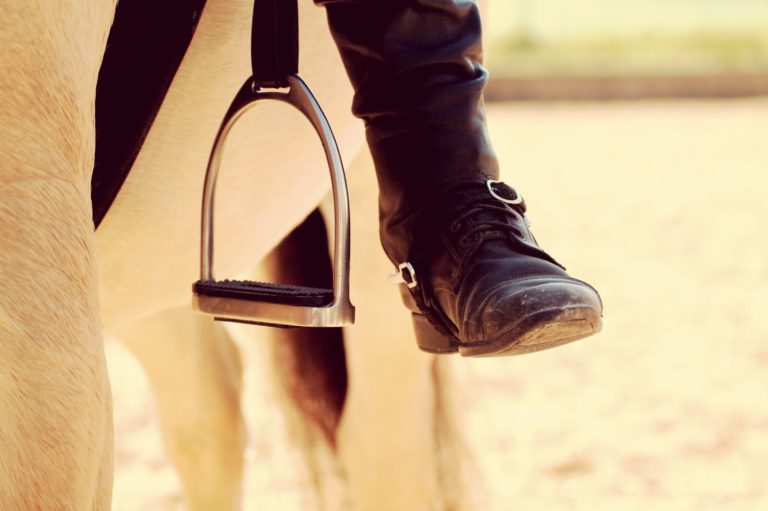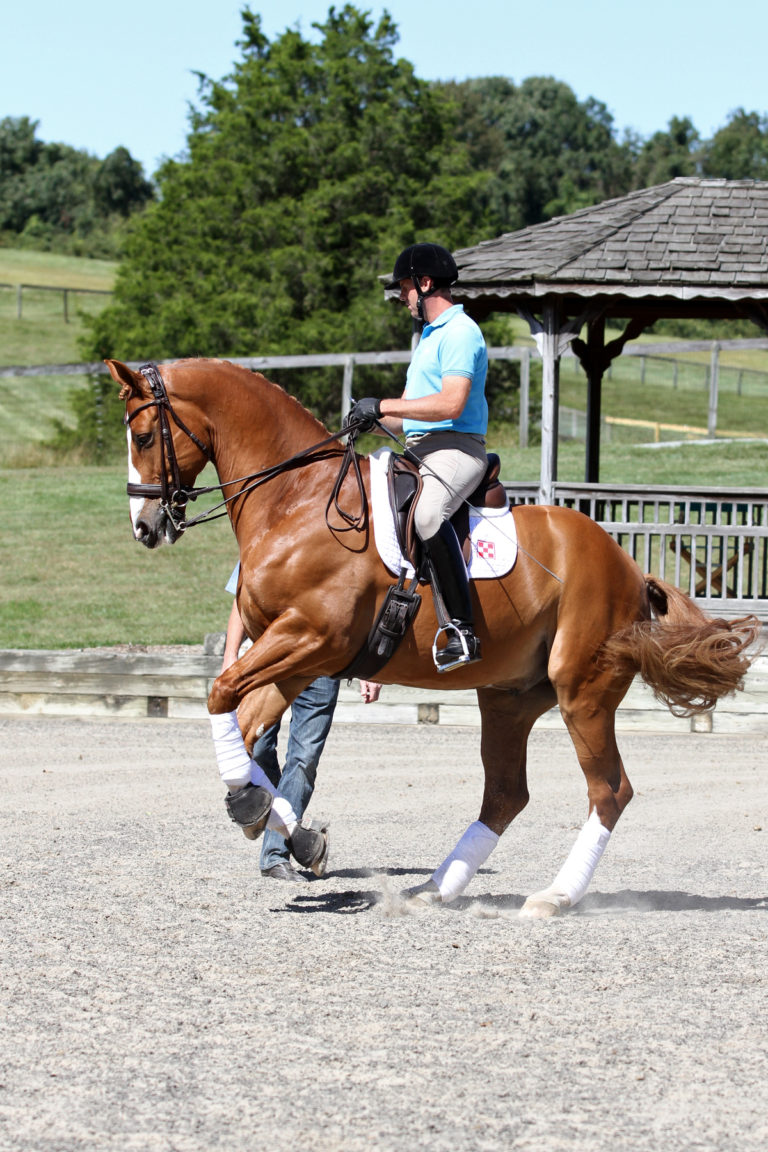Germany’s Isabell Werth, the world’s No. 1-ranked dressage rider and 2017 World Cup Champion, gave a demonstration at the 2017 FEI World Cup™ Dressage Final in Omaha, Nebraska, this past March. The demonstration, sponsored by The Dressage Foundation, focused on Isabell’s training methods and the stepping-stones she uses in bringing a young horse up the levels to Grand Prix with the help of three accomplished dressage competitors—Karen Pavicic, Endel Ots and Sabine Schut-Kery.
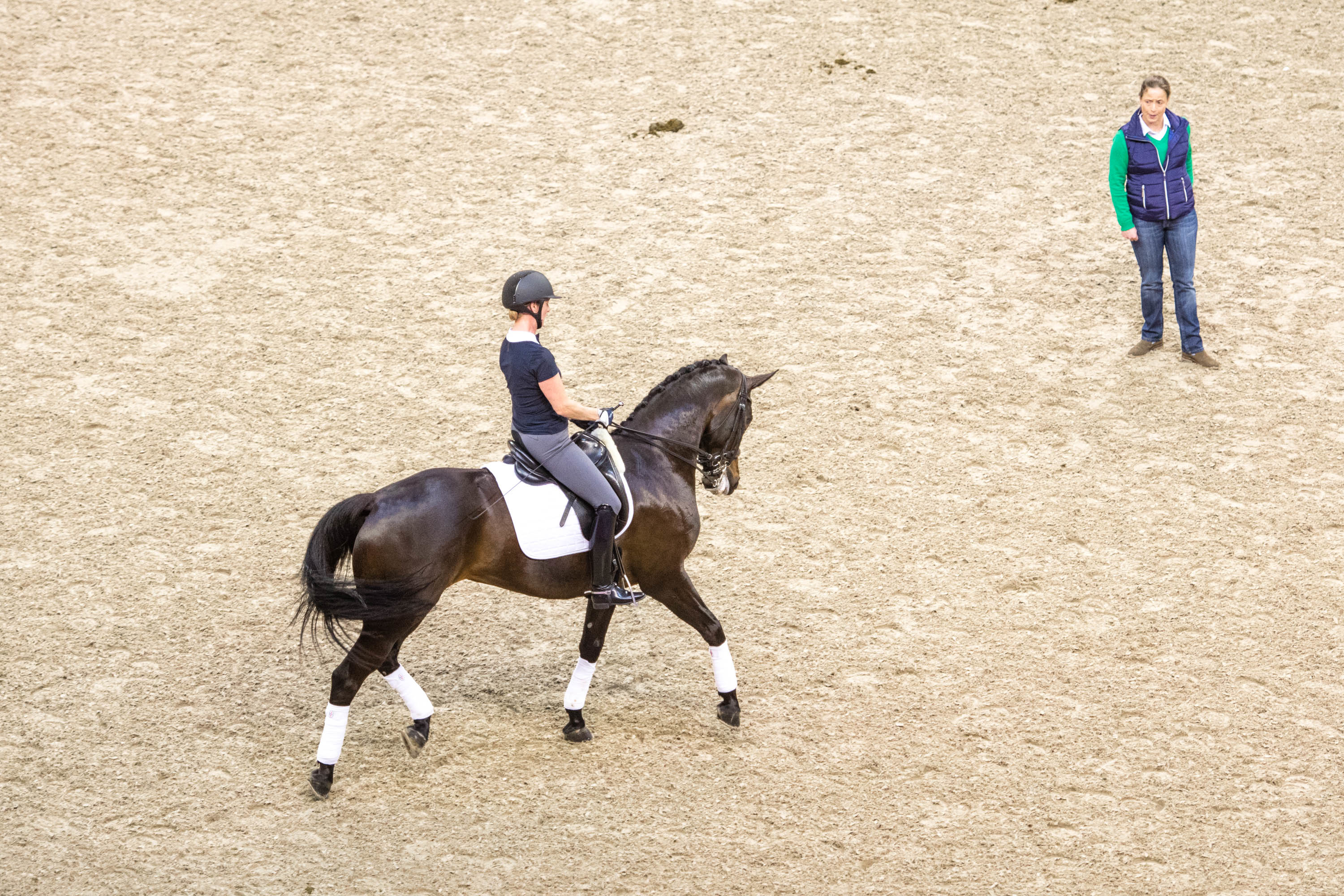
The first time Americans got to see Isabell Werth ride at the CenturyLink Center in Omaha was during the familiarization day. This is when the riders got to familiarize their horses with the competition arena for 30 minutes each, sharing it with three other competitors. Unfortunately, Isabell and America’s top rider, Laura Graves, drew the same time slot, so whereas everyone wanted to watch both of them 100 percent of the time, it wasn’t possible. From our seats at B, it was a bit like watching a tennis match, trying to see them equally.
For Laura, it looked to be a day like any other day. She and her Verdades (“Diddy”) warmed up beautifully and went through some of the Grand Prix movements. That’s what most riders do at a show.
That may have been the case with Isabell, too. Isabell’s work was slow, methodical and rhythmic. Isabell has won more medals than any equestrian in history, and she was very relaxed. Her mount, Weihegold OLD, a 12-year-old mare by Don Schufro out of a Sandro Hit mare, was also relaxed and moving modestly. They did some half passes and worked on square halts. They took lots of breaks. Although the stands were half filled, the audience was brimming with appreciation and often applauded spontaneously.
Frankly, however, Isabell’s mare looked fairly unremarkable until the last two minutes, when all of a sudden she looked breathtaking. “OH!” was the collective gasp of understanding from the audience. Weihegold, in the space of a second, evolved from a normal-looking horse into a brilliant one. That is exactly what dressage is supposed to do, but we rarely get such a tutorial.
The rest is history. Isabell is a genius, and with the help of the three volunteer horses and riders, she explained how she does what she does just before she won the World Cup Grand Prix. Here is just a bit of what she offered in her all-too-brief demonstration.
Inside Leg to Outside Rein
Isabell’s general purpose was to show a bit about how young horses develop and she began with Totem, a 5-year-old stallion by Totilas out of a Donnerhall mare, ridden by Canadian rider, Karen Pavicic. Totem had the three qualities Isabell looks for in a young horse:
1. “He must,” she said, “have three good gaits.” By “good,” she did not mean that the gaits should be extravagant or enough to score a 9 or a 10, but rather that they are without weakness: The walk must be four-beat, overstepping, free in the shoulder and not lose the rhythm in corners or when the reins are shortened. The horse must have a nice swinging, dynamic trot and a jumping canter.
2. The horse must be rideable and have a good mind.
3. He must have the desire to go forward.

From there, Isabell worked with Karen on developing the correct degree of flexion (not overflexion) and encouraging Totem to chew the bit. As a result of the flexion and chewing, they could work on the development of the connection between the inside leg and the outside rein. This was a theme that would be heard again and again from Isabell. “Inside leg to outside rein,” said Karen, after her ride. “She repeated it over and over and incorporated it with the use of shoulder-in, corners, circles and straight lines. She was insistent!” Isabell wanted Totem to accept these aids without losing the rhythm and swing. Karen and Totem were very successful.
The next to go was Endel Ots and Lucky Strike, a 7-year-old gelding by Lord Laurie, out of His Highness, and co-owned by Endel and his father Max. This horse was far too dynamic for Isabell’s taste. She was insistent that he become more normal looking and move in a natural, balanced way. In his enthusiasm, she said, the horse was running a bit into both reins in a way that was too straight—that is, without suppleness. She wanted the horse to be less expressive so that he could be more supple, flexible and bendable. She also wanted him to stretch, relax and open his neck—that is, open his throatlatch and seek the contact. “He needs to look for your arms,” Isabell said. “Flex him until he looks for the rein. Flex him from your inside leg as well as from your inside rein.” At the same time, she wanted the horse’s movement to be smaller. Again and again, she encouraged Endel to find a “little trot.”

“Quick, small steps,” she said. To that end, she wanted the first step of trot to be in shoulder-in so they could gain suppleness and prevent an overly huge step that would stiffen him. She wanted the horse to take the reins by opening/reaching with his neck. “He’s a little too light,” she said. Gradually the horse stretched and relaxed more, seeking the bit in circles and in shoulder-ins. “Pat him on the inside,” she suggested. They worked tirelessly on flexion and bend in shoulder-ins and on circles, concentrating always on that inside-leg-to-outside-rein connection until the horse was much more supple, reaching and uphill.
Next came the 8-year-old mare, Hello Halli, by the Trakehner Hochadel and out of a DeNiro mare, owned by Janet Curtis and Peggy Grau and ridden by Sabine Schut-Kery. Isabell asked Sabine to demonstrate lateral work, canter pirouettes and flying changes to two-tempis, and the mare moved with cadence and swing. She had never done one-tempis, but Isabell encouraged Sabine to try. “There’s always a first time,” she said. And the mare did them easily for the first time in front of a large, cheering World Cup crowd.
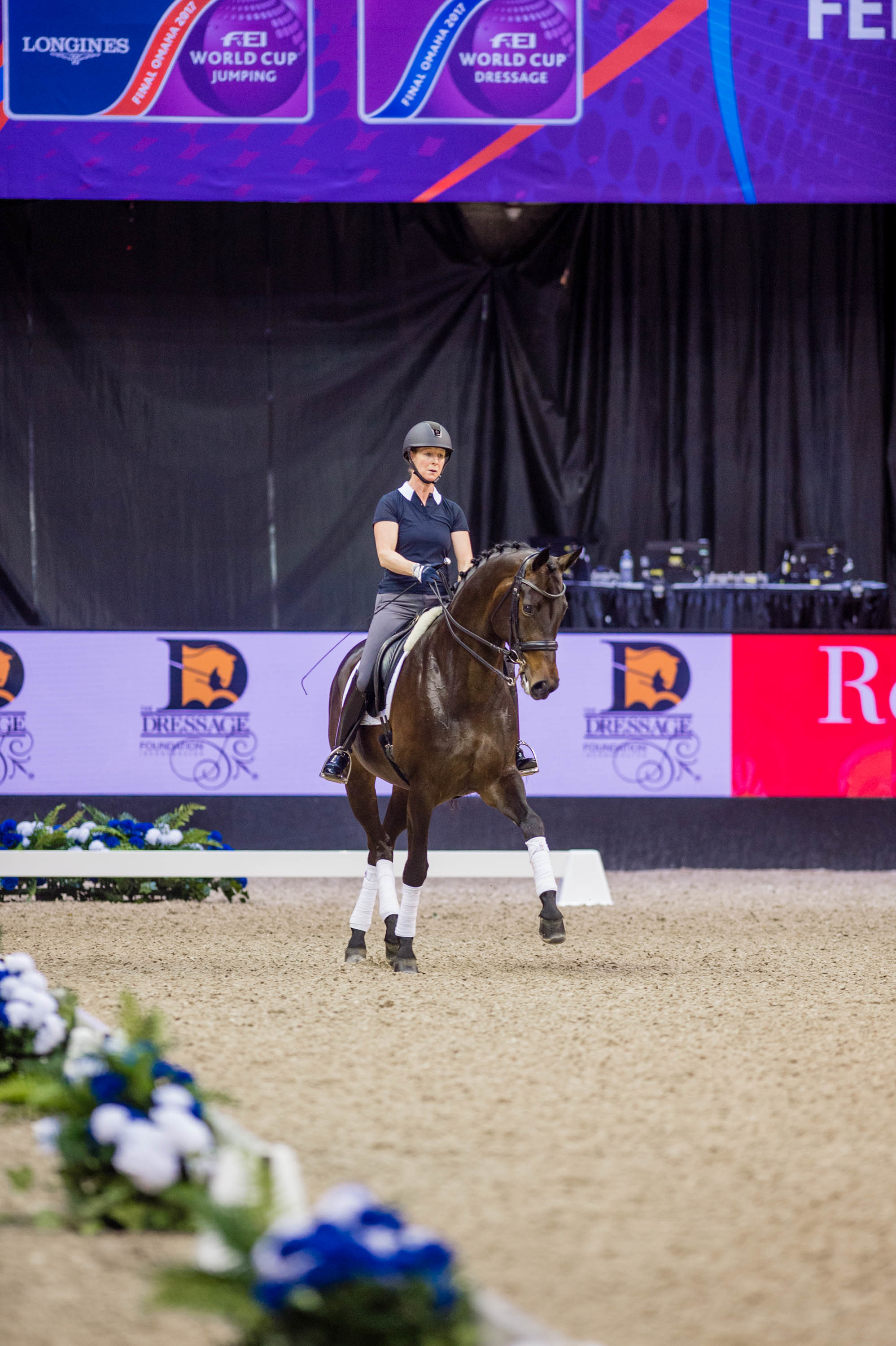
The announcer encouraged Isabell to finish her session in order to adhere to the event schedule, but that was before she was ready to stop. These international programs are, after all, always done on a very precise schedule—perfect for a sponsoring watch company like Longines. “Three more minutes, Isabell,” he said. She didn’t respond. Then our multilingual announcer encouraged her in German, and she quipped, “I don’t understand German.”
Isabell has a serious sense of humor, but she’s seriously as persistent as a dog with a bone when she’s teaching. Years ago, she gave a symposium in the U.S., and she said, “Inside leg to outside rein” at least 5,000 times in the space of two days. When I asked her about it afterward, she said, “I said it as often as I think it when I’m riding.” That gives us a bit of an idea of her steadfast commitment to principles.
During the actual competition, Laura gave Isabell a run for her money at the 2017 World Cup in Omaha. Isabell said, “I feel the breeze at my neck!” But that afternoon she won the World Cup Grand Prix with 82.3 percent and on Saturday she won the World Cup Freestyle Final with 90.704 percent. It was amazing.
During the actual competition, Laura gave Isabell a run for her money at the 2017 World Cup in Omaha. Isabell said, “I feel the breeze at my neck!” But that afternoon she won the World Cup Grand Prix with 82.3 percent and on Saturday she won the World Cup Freestyle Final with 90.704 percent. It was amazing.



